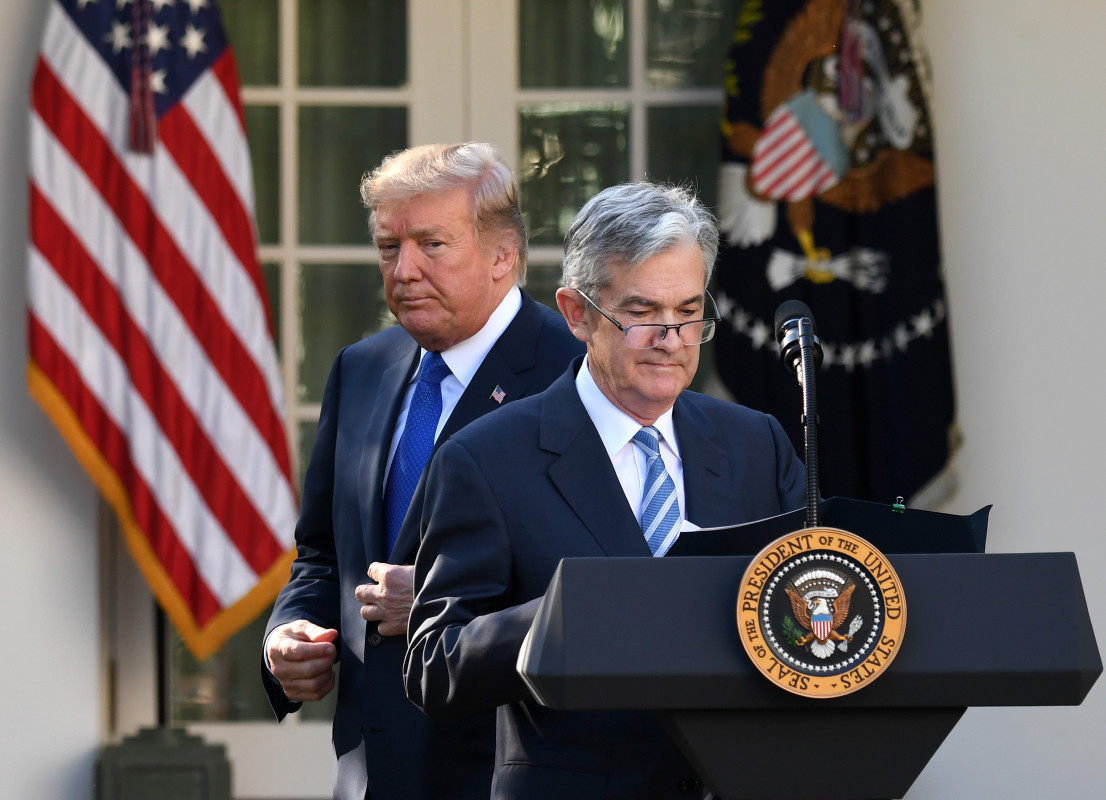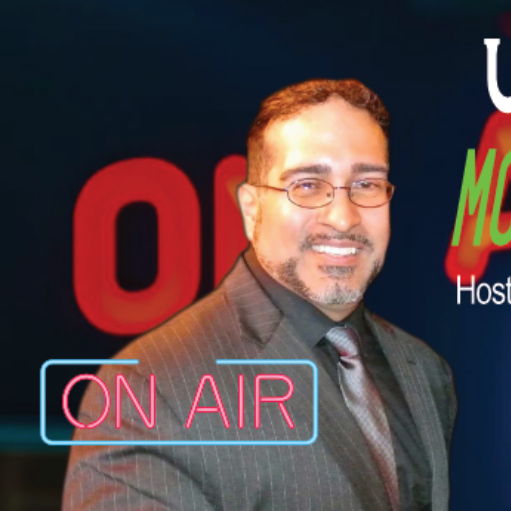President Donald Trump, posting a message from a golf course in Florida on Friday, renewed his call for a Federal Reserve interest-rate cut amid the worst two-day stock selloff on Wall Street since the global pandemic.
Federal Reserve Chairman Jerome Powell, indirectly responding from the stage of an economic event in suburban Washington, said he and his colleagues were in “no hurry” to change course.
💵💰Don’t miss the move: Subscribe to TheStreet’s free daily newsletter 💰💵
The differing views, and the chairman’s stoic resolve in focusing on delivering price stability and full employment, suggest that anyone betting on a so-called Fed put is likely to be disappointed.
“While uncertainty remains elevated, it is now becoming clear that the tariff increases will be significantly larger than expected,” Powell said, understating what are likely to be the biggest U.S. levies in a century. “The same is likely to be true of the economic effects, which will include higher inflation and slower growth.”
Stocks are deep in the throes of the biggest selloff in five years, with trillions of dollars of market value lost, recession risks accelerated, and concern about the specter of stagflation in the world’s biggest economy creeping higher.
Investors generally look for some form of support during sustained or disorderly market declines, and in recent times the Fed has provided that assistance in the form of coordinated bank rescues, liquidity lines and, in some cases, lower interest rates.
Trump’s global tariff gambit has renewed hopes for this so-called Fed put, which draws its name from products in the options market that protect investors against downside risks.
 President Trump wants Fed Chairman Powell to lower rates. Markets want at least one of them to stop the tariff-trigged selloff.
President Trump wants Fed Chairman Powell to lower rates. Markets want at least one of them to stop the tariff-trigged selloff.
Xinhua News Agency/Getty Images
Federal Funds futures trading suggests markets are betting on a May rate cut, with at least four further quarter-point reductions over the next eight months, which would take the central bank’s benchmark lending rate to 3%.
I think those hopes are likely to be dashed.
Protracted trade war bad for everyone
A protracted trade war, put firmly into play Friday in the form of retaliatory tariffs from China, will be unambiguously bad for both the U.S. and world economies.
The U.S. economy, which was already wobbling from Trump’s tariff threats during the first quarter, is now primed for recession, according to Wall Street forecasters, as consumption slows, exports plummet and business investment freezes.
At the same time, the higher prices consumers will be expected to pay as a result of the tariff regime, which could amount to around $1,000 for every lower-income household in the country, will stoke inflation.
Related: Trump tariffs raise U.S. recession and stagflation risks
Setting aside the fact that higher prices will likely be of higher consequence to the Fed than slowing growth — the central bank tends to focus on inflation pressures over labor market weakness in its twin mandate — the Fed’s reaction is likely to trail what investors are already expressing in the stock market.
Amid the broad tariff debate, corporate earnings forecasts are getting pummeled, with first-quarter growth estimates for the S&P 500 falling to around 10.6%, and likely lower still, from the 17.1% pace recorded over fourth-quarter 2024.
Earnings need to grow. But they can’t.
The stock market’s direction will largely be dictated by earnings growth. And individual stock prices as well as benchmark indexes essentially reflect what investors are willing to pay now for profits generated over the next 12 months.
Companies can grow earnings only if the economy is expanding. And they can widen their profit margins only if they’re able to pass on price increases, tied to the new tariff matrix, to American consumers.
Related: Goldman Sachs analysts overhaul S&P 500, GDP targets as Trump tariffs bite
If that does happen, inflation pressures are likely to accelerate well beyond the Fed’s preferred 2% target, making near-term interest-rate cuts difficult, if not impossible, to justify.
On the flip side, if companies aren’t able to pass on tariff impacts, they’re going to see their profit margins narrow and their profit growth slow. And while that could take some of the inflation out of the domestic economy and cement the case for Fed rate cuts, it wouldn’t compel investors to pay higher prices for U.S. stocks.
More Economic Analysis:
- Gold’s price hit a speed bump; where does it go from here?
- 7 takeaways from Fed Chairman Jerome Powell’s remarks
- Retail sales add new complication to Fed rate cut forecasts
In other words, the Fed will either be prevented from cutting as a result of higher inflation or cut rates as a result of slumping domestic growth.
Neither is likely to support U.S. stocks, which are already trading at historically high multiples. They are far more expensive than their European peers, with the indexes far too reliant on megacap tech and the Magnificent 7 stocks, which earlier this week slumped into bear-market territory (at least 20% below recent highs).
Bank of America strategists, led by Michael Hartnett, say recession could drag the S&P 500 to as low as 4,800 points, a 7% decline from current levels. But they argue for an “all-in” bet after that if slumping approval ratings force Trump to backtrack on tariff policy.
Hartnett describes such a move as a “Trump put.”
I think that’s a lot more likely, and a lot more effective, than any supportive action from the Fed.
